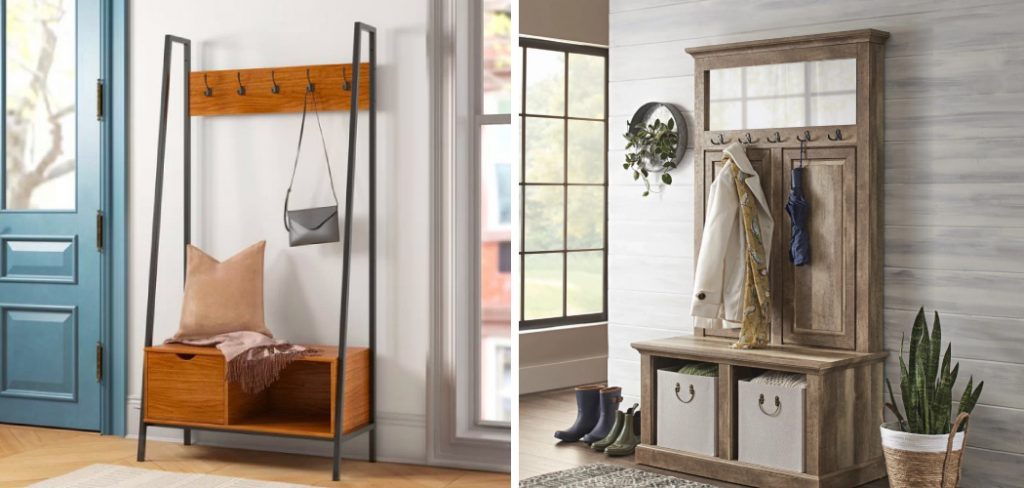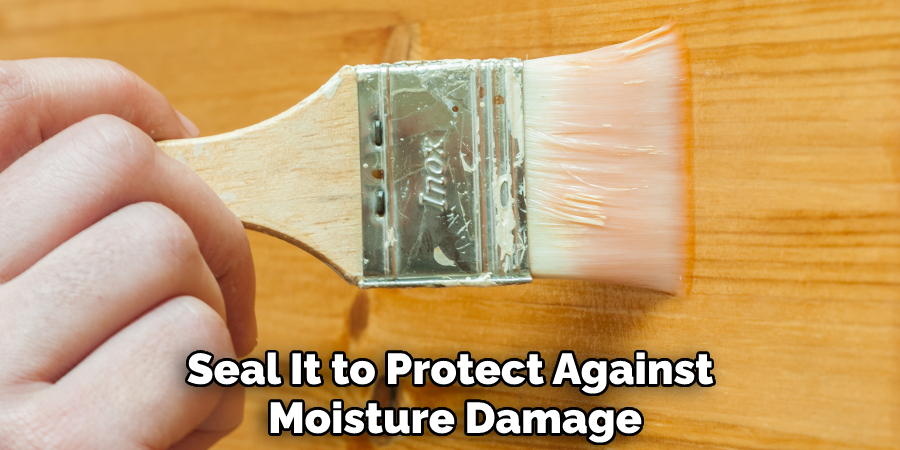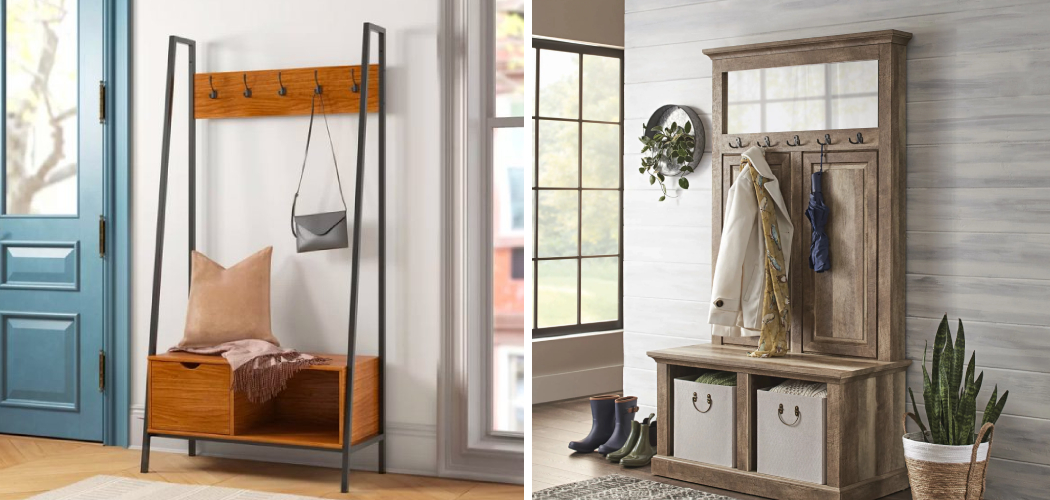Making furniture is a great way to add unique character to your home. A hall tree, in particular, can be a stylish and practical addition to any entryway or hallway. It provides a spot for coats and shoes and can also be used as storage for other items. Building a custom hall tree allows you to express your creativity and make something unique. You can easily construct your hall tree with the right materials and tools to fit your needs.

The primary benefit of making your own hall tree is that you can customize it to fit your space’s exact dimensions, colors, and style. With a custom-made hall tree, you don’t need to settle for pre-made options that may not suit your home.
Additionally, by crafting the piece yourself, you have the ability to choose the materials, such as wood and hardware, which will help ensure longevity. Building a hall tree also gives you a sense of accomplishment and pride in creating something unique with your hands. In this blog post, You will learn how to make a hall tree in detail.
Tools You Will Need
- Saw (circular or hand)
- Drill & Bits
- Hammer
- Tape Measure
- Level
- Screwdriver
- Wood glue
- Sandpaper/Sanding Block
- Safety glasses/Goggles
- Pencil and Marker.
Step-by-step Instructions for How to Make a Hall Tree
Step 1: Inspect the Space
Before you begin to build a hall tree, it’s important to inspect the space you plan to place it in. Measure the amount of available wall space and make sure that your design is compatible with any existing furniture or decor in the room.
Step 2: Design Your Hall Tree
Once you know how much room you have to work with, it’s time to get creative and start designing your hall tree. Sketch out a few different ideas for the shape and size of your hall tree and details like any additional shelves or drawers you want to include.

Step 3: Gather Your Supplies
After you settle on a design, gather all the necessary supplies. This will likely include wood, glue, nails, screws, hinges, and paint or stain, as well as any additional materials needed to complete the project. Once you have all the supplies together, it’s time to start cutting. Measure and mark your wood pieces according to your design and carefully cut each piece to size.
Step 4: Assemble the Frame
Now it’s time to come together all the pieces of your hall tree frame. Use glue and nails or screws to securely attach each piece, making sure that everything is straight and level. Once the frame is complete, inspect it for any weak spots or mistakes that need fixing before moving on to the next step.
Step 5: Attach the Shelves and Drawers
Once your frame is assembled, you can begin attaching any shelves or drawers that were part of your design. This could take some time, depending on how many pieces you included in your hall tree. Make sure everything is securely attached and there are no weak spots or gaps.
Step 6: Attach the Hooks
Now it’s time to attach any hooks you will be using for hanging items. Make sure that they are all placed evenly and securely attached. Once your hall tree is assembled, add trim pieces if desired. This is a great way to finish off the look of your hall tree and can also help reinforce any weak spots in the construction.
Step 7: Sand and Finish
Before you add paint or stain, it’s important to sand everything down smoothly. Use fine-grit sandpaper to carefully remove any rough edges or splinters from your hall tree. Once everything is smooth, you can begin to apply paint or stain according to the directions on the package. After all the hard work, installing your new hall tree is the time. Use a level and secure fastener to make sure that it is properly installed and won’t move.

Safety Tips for How to Make a Hall Tree
- Wear proper safety gear such as gloves, eye protection, and a dust mask to protect yourself from sawdust or hazardous materials.
- Read the instructions thoroughly before beginning the project, and make sure you understand them clearly.
- Make sure your work area is well-lit and free of clutter so that you can see what you are doing.
- Use the appropriate power tools and other equipment for the job.
- Be mindful of your fingers and hands when using saws, knives, or drills to avoid injury.
- Measure twice and cut once – double-check all measurements before cutting wood or any other material to ensure accurate results.
- Make sure all screws and nails are the correct size for the job and securely fastened.
- Double-check that all moving parts, such as doorknobs, hinges, and latches, are working properly before assembling your hall tree.
By following these simple safety tips, you can safely and successfully build a beautiful hall tree to enhance your home decor.
What Are the Best Resources to Use When Learning to Make a Hall Tree?
Learning to make a hall tree can be an intimidating task. Many people don’t know where to start when it comes to working with wood and creating furniture. Fortunately, several resources can help you learn the basics of DIY furniture projects, including making a hall tree.
One great resource for learning to make a hall tree is YouTube. There are countless videos available on the platform that offer step-by-step instructions for building a variety of furniture projects. Watching these videos can help you visualize the entire process and gain hands-on experience from experts in the field.
Books are another great resource for learning to make a hall tree. There are many books dedicated to woodworking and furniture-making, with detailed instructions for projects like a hall tree. These books often include helpful tips and tricks from experienced woodworkers that can help you get the most out of your project.
What Kind of Maintenance and Care Should You Give Your Hall Tree Over Time?
In order to keep your hall tree looking good and functioning properly over time, it requires regular maintenance and care. To start, make sure to dust off any dirt or debris that accumulates on the surface of your hall tree using a soft cloth or feather duster.
Additionally, use furniture polish if desired in order to maintain a shiny finish. If your hall tree is made of wood, seal it to protect against moisture damage and keep the material looking new. When cleaning wooden hall trees, use a damp cloth or a soft-bristled brush and a mild cleaner to scrub away any dirt or grime that may have built up over time.

Occasionally, check the hardware on your hall tree to ensure it is still properly secured and functioning. If necessary, tighten any loose screws or bolts that may have come loose over time. Finally, check for signs of wear and tear on your hall tree from time to time in order to ensure its longevity. A little preventative maintenance can go a long way in keeping your hall tree looking and functioning like new year after year.
Are There Any Special Techniques or Features That Can Make a Hall Tree Unique?
When creating your own hall tree, you can use many different types of materials and techniques to make it unique. Tools such as pocket-hole jigs, biscuit joiners, dowel jigs, and miter saws can be used to create custom cuts and shapes that set your hall tree apart from others. You could also consider adding features such as shelves, drawers, or hooks to give your hall tree additional storage options.
If you are looking for a truly unique look, consider using reclaimed wood with interesting grain patterns and colors. Finally, if you have access to specialized tools like a router table or shaper cutter, you can create intricate details in the legs and arms of your hall tree to give it an elegant look. No matter what techniques and features you choose, with a bit of planning and creativity, your hall tree can be a unique piece that will surely impress.

Conclusion
One disadvantage to making a hall tree is the amount of time it takes. Building furniture can be a very labor-intensive process requiring precise measurements and cutting techniques. Along with this, it can also be expensive due to the cost of materials as well as potential tools needed. As mentioned previously, even if you have some woodworking experience, there is still a steep learning curve when it comes to making your own furniture.
In conclusion, making a hall tree is an easy and fun DIY project that can add style and organization to any entryway. With the right supplies, tools, and instructions, it’s possible for anyone with basic woodworking skills to construct their own beautiful custom-made hall tree.
The result will be an attractive piece of furniture that provides extra storage in your entryway while also adding aesthetic value to the room. I hope this article has been beneficial for learning how to make a hall tree. Make Sure the precautionary measures are followed chronologically.

